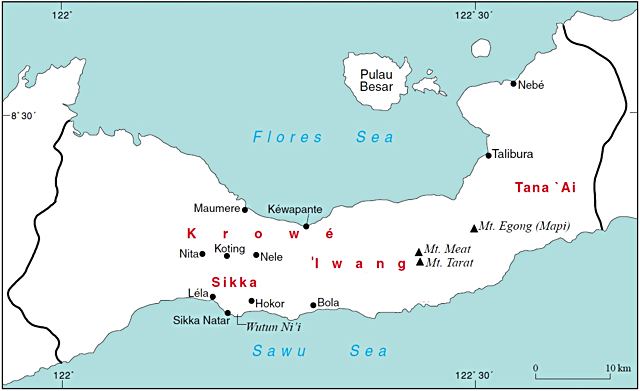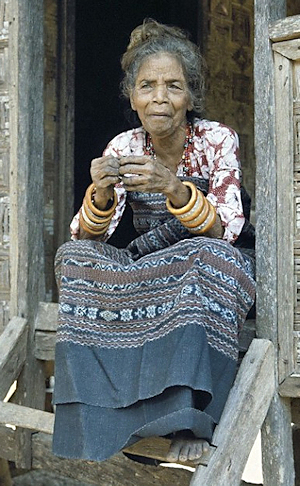Krowé (Iwangeté), a cultural enclave in Sikka
The emblematic long bridewealth sarong, utang wiwir wanan, is made of four panels with narrow ikated bands. The widest bands, called ina geté, are decorated with a variety of small motifs including teké, lizard; pigan uben, the circular motif seen on some antique plates; jata selér, spinning wheel; and petan puhun, pineapple flower. As the group is hardly known and their visual language is less exuberant than most Sikka ikat textiles, few examples been collected. We were alerted by one traveler with ethnographic interests who visited the area in 2018, that Iwangeté is not the name of a clan but a derogatory term formerly used to indicate the people living in the hills south of Maumere, with the connotations 'unintelligent, primitive, backwards'. It should be noted that in much of the world hill people, who are often more traditional due to the remoteness of their places of residence, are looked down upon by plains people, whereas the former often look down upon the latter (not just literally), whom they tend to regard as degenerate (less respectful of tradition) and crassly commercial. As David Butterworth explains in the doctoral thesis cited below to which we were alerted by Linda S. McIntosh, the people concerned do not self-identify as Iwangeté, but rather as inhabitants of a small group of villages, that some authors group together as Krowé, though it is an open question if the highly individualistic villagers accord with this. These hill people apparently successfully resisted the empire building project of the royal house of Sikka Natar, as they were never fully integrated in its Dutch-sponsored rajadom based on the southern coast. This very resistance may well have exacerbated any pre-existing negative attitudes towards those obstinate hill people in Sikka proper. Map showing the Krowé, respectively Iwangeté region in Sikka Source: David Butterworth, 'Lessons of the Ancestors - Ritual, Education and the Ecology of Mind in an Indonesian Community', doctoral thesis, 2008. (Slightly modified for simplicity.) Other input from Darrell McKnight. |
||||||


